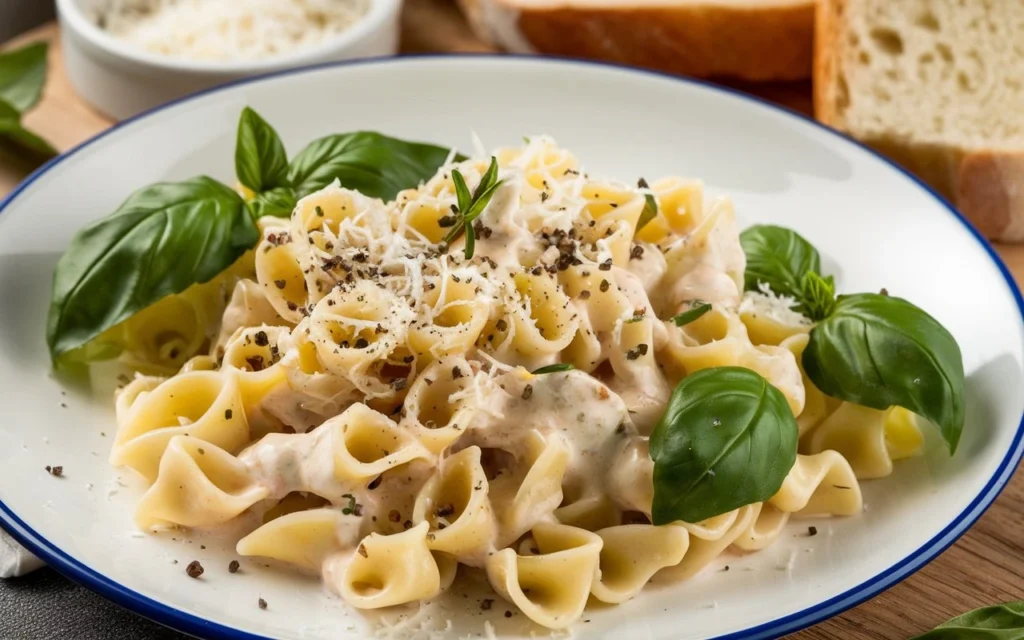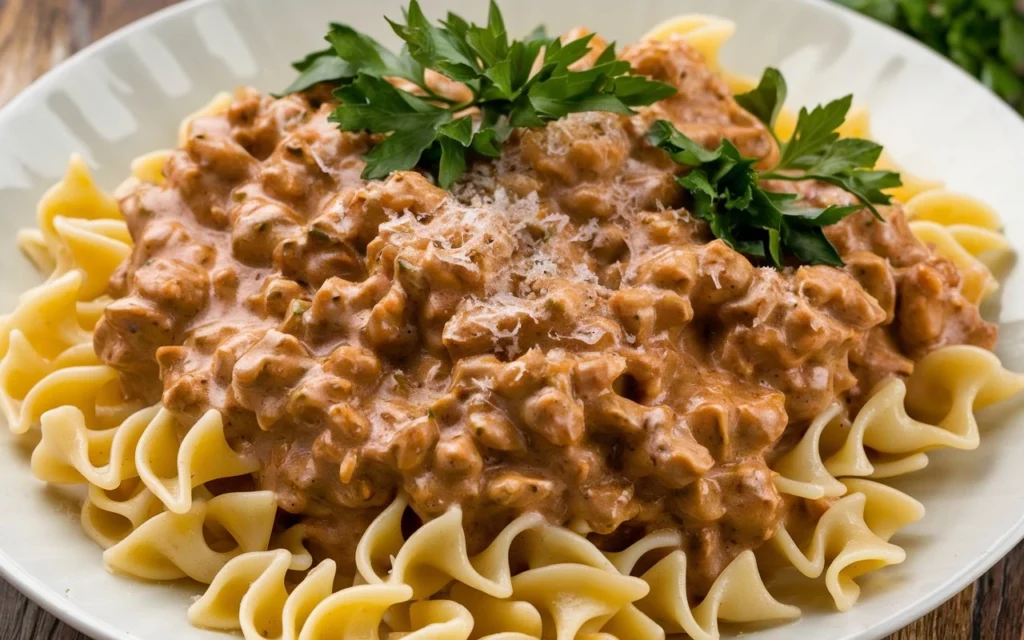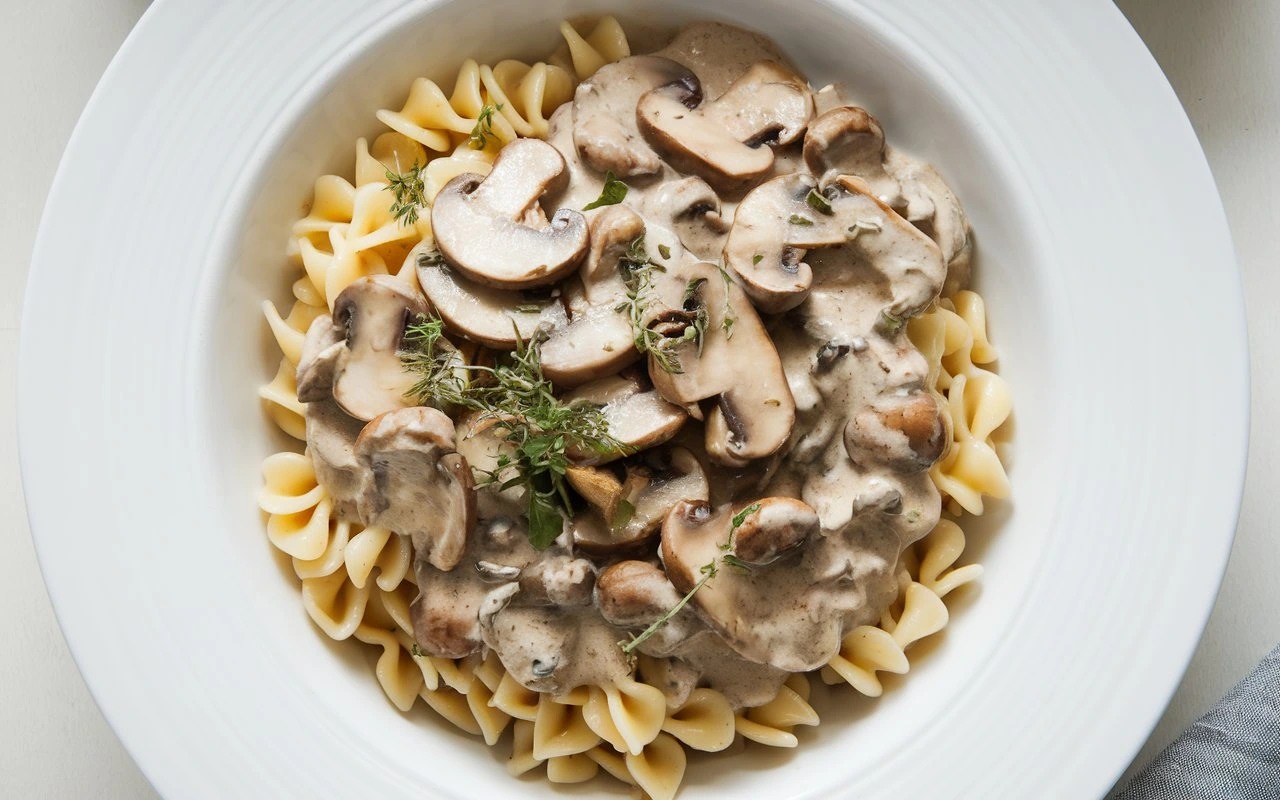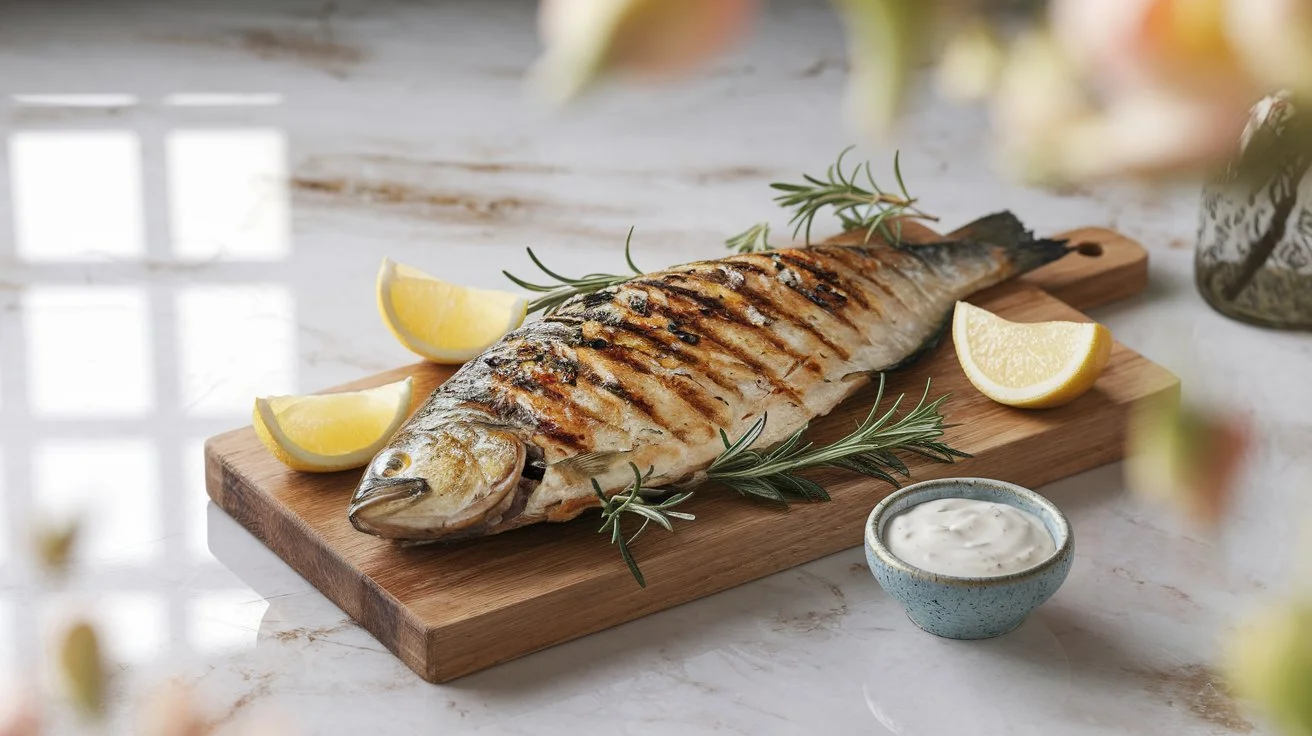Introduction
When it comes to versatile pasta, few shapes can rival the charm and functionality of ditalini. These tiny tubes are a staple in Italian cuisine, loved for their ability to complement soups, salads, and hearty mains alike. Whether you’re crafting a comforting bowl of Pasta e Fagioli or experimenting with modern twists like a fresh ditalini pasta salad, this ingredient shines every time. In this article, we’ll delve into everything you need to know about ditalini, from its origins to cooking techniques and irresistible recipes. Let’s dive into the world of ditalini recipes and discover its culinary magic!
Introduction to Ditalini Pasta
What is ditalini recipes Pasta?
Ditalini, which translates to “little thimbles” in Italian, is a short, tube-shaped pasta that hails from the southern regions of Italy. Its petite size and hollow structure make it perfect for absorbing sauces, broths, and dressings. While it’s a staple in traditional dishes like minestrone and Pasta e Fagioli, it has gained popularity across the globe for its versatility.
Origins and History of ditalini recipes
ditalini has its roots in the rustic kitchens of southern Italy, where it was often paired with simple, hearty ingredients like legumes and vegetables. Historically, it was seen as a practical choice for families looking to make the most of limited ingredients. Over time, this unassuming pasta gained recognition for its adaptability and became a beloved addition to both traditional and modern recipes.
Culinary Uses of ditalini recipes
One of the reasons ditalini has stood the test of time is its incredible versatility. This pasta shines in a wide range of dishes, such as:
- Soups: Its small size allows it to blend seamlessly into broths without overpowering other ingredients.
- Salads: Cold pasta salads get a delightful texture and bite with the addition of ditalini.
- Baked Dishes: Its ability to hold sauces makes it a great choice for baked casseroles or gratins.
Additionally, ditalini works wonders as a base for innovative recipes, proving that even the simplest ingredients can deliver complex flavors. Whether you’re recreating a family favorite or exploring new culinary horizons, ditalini is the pasta to reach for!
Classic Ditalini Recipes
Pasta e Fagioli: A Traditional Italian Soup
Pasta e Fagioli, or “pasta and beans,” is a quintessential Italian comfort food that embodies simplicity and flavor. This dish combines tender beans, aromatic herbs, and savory broth with the delightful texture of ditalini pasta, making it both hearty and satisfying.
Ingredients
To make Pasta e Fagioli, gather these essentials:
- 1 cup of ditalini pasta
- 1 can of cannellini or navy beans (rinsed and drained)
- 2 tablespoons olive oil
- 1 small onion, finely chopped
- 2 cloves garlic, minced
- 1 carrot, diced
- 1 celery stalk, diced
- 4 cups vegetable or chicken stock
- 1 can (14 oz) of diced tomatoes
- 1 teaspoon dried oregano
- 1 teaspoon dried thyme
- Salt and pepper to taste
- Fresh parsley or basil for garnish
Step-by-Step Recipe
- Heat olive oil in a large pot over medium heat. Add onion, garlic, carrot, and celery, then sauté until softened, about 5 minutes.
- Stir in the beans, tomatoes, oregano, thyme, salt, and pepper. Cook for 2-3 minutes to meld the flavors.
- Pour in the stock and bring it to a gentle boil. Reduce heat and simmer for 15 minutes.
- Meanwhile, cook ditalini in salted water until al dente. Drain and set aside.
- Add the cooked pasta to the soup and stir well. Adjust seasoning as needed.
- Serve hot, garnished with fresh parsley or basil.
Why Ditalini is Perfect for This Dish
The tubular structure of ditalini efficiently absorbs the savory broth, allowing every bite to become deeply flavorful and satisfying. Furthermore, its small size perfectly balances the ratio of pasta to beans, which enhances the dish’s overall texture and harmony. By integrating ditalini into this comforting recipe, you not only achieve a delightful balance but also ensure that every ingredient complements the other beautifully.

Ditalini with Peas and Parmesan
When you’re short on time but crave a satisfying meal, this ditalini with peas and parmesan recipe comes to the rescue. It’s creamy, cheesy, and bursting with flavor—ideal for busy weeknights or a quick lunch.
Quick and Easy Recipe for Weeknights
This recipe requires only a handful of pantry staples:
- 1 cup ditalini recipes pasta
- 1 cup frozen peas
- 2 tablespoons unsalted butter
- 1/3 cup grated Parmesan cheese
- 1/4 cup heavy cream or milk
- Salt and pepper to taste
Steps:
- Boil ditalini recipes in salted water until al dente, then drain, reserving 1/2 cup of the pasta water.
- In the same pot, melt butter over medium heat. Add peas and sauté for 2-3 minutes.
- Lower the heat and stir in the Parmesan cheese, heavy cream, and a splash of pasta water to create a light sauce.
- Toss in the cooked ditalini and mix well until the pasta is coated in the sauce.
- Season with salt and pepper to taste. Serve warm with extra Parmesan on top.
Flavor Profile and Pairing Suggestions
This dish perfectly combines the natural sweetness of peas with the salty, umami richness of Parmesan, creating a harmonious and satisfying flavor profile. To enhance the meal further, pair it with a crisp side salad or freshly steamed vegetables, which add balance and a refreshing contrast. For those seeking a heartier option, add grilled chicken or shrimp to boost the protein content and make the dish even more filling. By thoughtfully selecting complementary sides and proteins, you can transform this simple recipe into a well-rounded and memorable meal.
Minestrone Soup Featuring Ditalini
Minestrone remains an essential addition to any collection of classic ditalini recipes, as it highlights the richness of Italian culinary tradition. This vegetable-packed soup not only offers a wholesome and hearty experience but also incorporates a delightful variety of flavors. By adding ditalini to the mix, you enhance the soup’s texture and ensure that every spoonful feels satisfying and balanced. Additionally, the pasta integrates seamlessly with the vegetables and broth, making minestrone both comforting and unforgettable.
Traditional Preparation of Minestrone
The beauty of minestrone lies in its flexibility. You can use whatever vegetables are in season or available. Here’s a basic outline:
- 1 cup ditalini recipesi pasta
- 1 tablespoon olive oil
- 1 onion, diced
- 2 cloves garlic, minced
- 1 zucchini, diced
- 1 potato, diced
- 1 cup green beans, chopped
- 1 can (14 oz) diced tomatoes
- 4 cups vegetable stock
- 1 teaspoon Italian seasoning
- Salt and pepper to taste
- Freshly grated Parmesan for garnish
Steps:
- Heat olive oil in a large pot and sauté onion and garlic until fragrant.
- Add zucchini, potato, green beans, and any other vegetables of your choice. Cook for 5 minutes.
- Stir in tomatoes, stock, Italian seasoning, salt, and pepper. Bring to a boil, then reduce heat and simmer for 20 minutes.
- Cook ditalini recipes separately until al dente, then add it to the soup just before serving.
- Top with grated Parmesan and serve warm.
The Role of Ditalini in Enhancing the Dish
ditalini recipes transforms minestrone from a simple vegetable soup into a satisfying meal. Its size and shape ensure it doesn’t overwhelm the vegetables but adds just the right amount of substance. This balance makes minestrone a beloved dish for both casual dinners and special occasions.
Modern Twists on Ditalini Dishes
Cheesy Ditalini with Chicken and Spinach
A creamy, cheesy delight, this dish combines the bite-sized charm of ditalini recipes with tender chicken and fresh spinach. It’s perfect for a cozy dinner or when you need a meal that feels indulgent yet nutritious.
Ingredients and Preparation Steps
You’ll need:
- 1 cup ditalini recipes pasta
- 1 tablespoon olive oil
- 1 chicken breast, diced
- 2 cups fresh spinach leaves
- 2 tablespoons butter
- 2 tablespoons all-purpose flour
- 1 cup milk
- 1 cup shredded mozzarella cheese
- 1/4 cup grated Parmesan cheese
- Salt and pepper to taste
Steps:
- Boil ditalini until al dente, then drain and set aside.
- Heat olive oil in a pan, add chicken, and cook until golden brown and fully cooked. Set aside.
- In the same pan, melt butter and whisk in flour, cooking for 1-2 minutes. Slowly add milk, stirring constantly, until it thickens.
- Reduce heat, stir in mozzarella and Parmesan until melted and creamy. Season with salt and pepper.
- Add cooked ditalini, chicken, and spinach to the sauce. Stir until combined and spinach is wilted. Serve hot.
How to Achieve a Creamy Texture
Whisk the sauce consistently as you prepare it to maintain a rich, velvety texture and avoid the formation of lumps. Moreover, choose whole milk for a creamy base, or add a splash of cream to enhance the richness further. Always fold the cheese into the sauce off the heat, ensuring it melts smoothly and remains free of clumps. This method not only improves the sauce’s consistency but also creates a luscious and silky result that coats the pasta perfectly.
Ditalini Pasta Salad with Fresh Vegetables
Light, refreshing, and colorful, this ditalini pasta salad is a perfect summer dish. With a zesty dressing and crisp vegetables, it’s a crowd-pleaser for picnics and potlucks.
Summer-Friendly Recipe with a Zesty Dressing
Ingredients:
- 1 cup ditalinii pasta
- 1 cup cherry tomatoes, halved
- 1 cup diced cucumbers
- 1/2 cup black olives, sliced
- 1/4 cup crumbled feta cheese
- 1/4 cup red onion, finely sliced
- 3 tablespoons olive oil
- 2 tablespoons lemon juice
- 1 teaspoon Dijon mustard
- Salt and pepper to taste
Steps:
- Cook ditalini in salted water, drain, and rinse with cold water to stop cooking.
- Whisk together olive oil, lemon juice, Dijon mustard, salt, and pepper to create the dressing.
- In a large bowl, toss the cooled ditalini with tomatoes, cucumbers, olives, feta, and red onion.
- Drizzle the dressing over the salad and mix gently. Serve chilled.
Tips for Customizing with Seasonal Ingredients
Change the vegetables according to the season to keep your dish fresh and flavorful. For example, add grilled zucchini or bell peppers during the summer to highlight vibrant and light ingredients. In contrast, include roasted butternut squash or kale during the fall to embrace heartier flavors. Additionally, enhance the dish by incorporating protein-rich options like chickpeas, grilled chicken, or shrimp, which add texture and make the meal more satisfying. By adapting the ingredients thoughtfully, you can create a dish that feels perfectly tailored to any time of year.
Ditalini Risotto with Spicy Sausage
This innovative dish blends the creaminess of risotto with the bite of ditalini. Spicy sausage adds a bold kick, creating a rich, hearty meal.
Fusion of Pasta and Risotto Techniques
Ingredients:
- 1 cup ditalini recipes pasta
- 2 tablespoons olive oil
- 1 spicy Italian sausage, casing removed
- 1/2 onion, finely diced
- 2 cloves garlic, minced
- 1/4 cup white cooking wine or chicken broth
- 2 cups chicken stock, heated
- 1/3 cup grated Parmesan cheese
- 1 tablespoon butter
- Salt and pepper to taste
Steps:
- Heat olive oil in a large skillet. Crumble sausage into the pan and cook until browned. Remove and set aside.
- In the same pan, sauté onion and garlic until translucent.
- Add ditalini and toast it lightly for 1-2 minutes. Deglaze with wine or broth, scraping up any bits stuck to the pan.
- Gradually add the hot chicken stock, one ladle at a time, stirring constantly until absorbed before adding more. Continue until the ditalini is cooked through and creamy.
- Stir in Parmesan, butter, and cooked sausage. Season with salt and pepper. Serve immediately.
Balancing Spices with Creamy Textures
To balance the spiciness of the sausage, ensure the ditalini recipes is well-coated in the creamy Parmesan sauce. Adding a dollop of ricotta or mascarpone can further mellow the heat while enhancing richness.
Cooking Techniques and Tips for ditalini recipes
Achieving the Perfect Al Dente Texture
Cook ditalini recipes to the perfect al dente texture to preserve its signature bite while ensuring it absorbs sauces or broths effectively. Achieving this ideal texture not only enhances the pasta’s overall appeal but also balances chewiness with tenderness. By focusing on precise cooking, you allow ditalini to integrate seamlessly into dishes, whether they are soups, salads, or hearty mains. This approach maintains the pasta’s quality and elevates the flavor and texture of any meal featuring ditalini recipes.
Importance of Cooking Time and Method
To ensure perfectly cooked ditalini recipes, always check the package instructions and taste-test a piece 1-2 minutes before the suggested time. Cooking in a large pot of salted, boiling water prevents sticking and enhances the flavor of your pasta. Mastering the timing is key to making ditalini recipes truly satisfying.
Tools and Techniques to Prevent Overcooking
Lift ditalini recipes carefully out of the pot with a fine-mesh strainer or slotted spoon, ensuring you preserve the pasta’s delicate shape. To immediately stop the cooking process and maintain its texture, drain the pasta thoroughly. Rinse it under cold water if you don’t plan to use it immediately. Additionally, this technique prevents overcooking and keeps ditalini recipes firm and ready for any dish you prepare next.
Pairing Ditalini with Sauces and Ingredients
The small size and hollow structure of ditalini make it a highly versatile choice for a variety of recipes. This adaptability ensures that ditalini recipes fit seamlessly into countless cuisines and flavor profiles.
Best Sauces and Flavor Combinations for Ditalini
- Creamy sauces like Alfredo or Parmesan-based blends coat each piece of ditalini evenly, creating a rich and indulgent dish.
- Light tomato sauces or broths pair perfectly with ditalini recipes, enhancing the pasta’s flavor without overpowering its texture.
- Pesto brings a bright, herbaceous note to ditalini recipes, complementing fresh vegetables beautifully and adding a refreshing twist.
Matching Ditalini with Proteins and Vegetables
Grilled chicken, turkey meatballs, or shrimp pair flawlessly with ditalini recipes, creating a well-rounded and satisfying meal. Incorporate vibrant vegetables such as peas, zucchini, or spinach to add a burst of color and a wealth of nutrients. These combinations enhance the appeal of ditalini recipes while maintaining a perfect balance of flavors. Additionally, the versatility of ditalini recipes allows them to adapt to a wide range of ingredients and cuisines, showcasing their charm effortlessly.
Storing and Reheating Ditalini Dishes
Proper storage and reheating techniques play a crucial role in ensuring your ditalini recipes remain just as delightful as when freshly made.
Proper Storage Methods to Retain Flavor
Store cooked ditalini recipes in an airtight container, adding a light drizzle of olive oil to prevent the pasta from sticking. Keep it refrigerated for up to three days to maintain its flavor and texture. This simple step preserves the quality of ditalini recipes and keeps them ready for use in various dishes.
Tips for Reheating Without Compromising Texture
Reheat ditalini recipes in a skillet with a splash of broth or sauce to restore their moisture and freshness effectively. This method prevents the pasta from drying out while maintaining its original texture. Avoid microwaving ditalini recipes directly, as it often makes the pasta gummy and less enjoyable. By reheating with care, you can ensure your ditalini recipes are just as tasty the second time around.

FAQs Section
What is the best way to cook ditalini pasta?
Cook ditalini in plenty of salted boiling water until al dente, as per package instructions. Taste-testing is key to achieving the perfect texture.
Can I substitute ditalini with other pasta shapes?
Yes, small pasta shapes like elbow macaroni, orzo, or small shells can work as substitutes, though the texture and size may slightly differ.
How do I prevent ditalini from becoming mushy in soups?
Cook ditalini separately and add it to the soup just before serving. This prevents overcooking as it sits in hot broth.
What are some vegetarian ditalini recipes?
Vegetarian options include ditalini pasta salad with fresh vegetables, minestrone soup, or ditalini with peas and Parmesan.
Is ditalini pasta suitable for cold salads?
Absolutely! Its small size and shape make it ideal for pasta salads, allowing even distribution of dressing and ingredients.
Where can I buy ditalini pasta?
Ditalini pasta is available at most grocery stores, Italian specialty markets, or online retailers. Look for high-quality brands for the best results.
Conclusion
Embracing the Versatility of Ditalini in Your Kitchen
ditalini pasta consistently proves its value in the kitchen by offering versatility and serving as a staple ingredient in countless recipes. From comforting soups that warm the soul to refreshing salads perfect for summer, it effortlessly adapts to various culinary creations. Moreover, ditalini transitions seamlessly between traditional recipes steeped in history and innovative modern dishes bursting with creativity.
Take the opportunity to explore new possibilities and experiment boldly as you incorporate ditalini into your meals. Let its charm and practicality inspire you to craft unique dishes that suit your taste and style. With its ability to elevate both simple and complex recipes, this delightful pasta shape is sure to become a beloved addition to your culinary repertoire.








